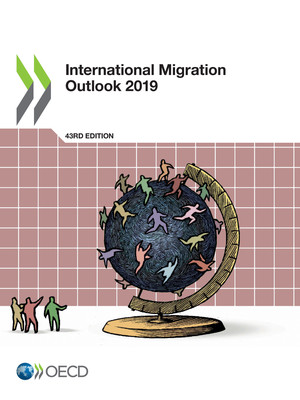copy the linklink copied!Spain
6.2 million, 52% women
13% of the population
Evolution since 2007: +5%
Main countries of birth:
Morocco (12%), Romania (10%), Ecuador (7%)
In 2017, Spain received 324 000 new immigrants on a long-term or permanent basis (including changes of status and free mobility), 8.3% more than in 2016. This figure comprises 43.8% immigrants benefitting from free mobility, 9.4% labour migrants, 36% family members (including accompanying family) and 1.3% humanitarian migrants.
Around 38 000 permits were issued to tertiary-level international students and 11 000 to temporary and seasonal labour migrants (excluding intra-EU migration). In addition, 60 000 intra-EU postings were recorded in 2017, an increase of 16% compared to 2016. These posted workers were generally on short-term contracts.
Morocco, Colombia and Venezuela were the top three nationalities of newcomers in 2017. Among the top 15 countries of origin, Venezuela registered the strongest increase (13 000) in flows to Spain compared to the previous year.
In 2018, the number of first asylum applicants increased by 73.2%, to reach around 53 000. The majority of applicants come from Venezuela (19 000), Colombia (8 500) and Syria (2 700). The largest increase since 2017 concerned nationals of Venezuela (8 700) and the largest decrease nationals of Syria (-1 400). Of the 12 000 decisions taken in 2018, 24.3% were positive.
Emigration of Spaniards to OECD countries decreased by 3% to 85 000. Approximately 22.1% of this group migrated to Germany, 21.5% to the United Kingdom and 12.9% to France.
The government change that took place in Spain in June 2018 led to the creation of a Secretariat of State for Migration. The Secretariat has two administrative divisions: one deals with migration and the other with integration and humanitarian assistance. In addition, an interministerial body brings together the ministries with responsibilities related to migration issues, thereby coordinating and having an overview of the entire migratory phenomenon.
One of the pillars of the new Spanish migration policy is the promotion of orderly, regular and safe migration through the construction of legal migration pathways. New programmes are underway, for example, to expand the possibility of hiring foreigners in economic sectors beyond that of agriculture or granting job-seeking visas for foreign descendants (children or grandchildren) of Spaniards; a pilot programme has begun in Argentina.
In addition, the regulations governing the admission and residence in Spain of international students and researchers were modified in 2018 on the occasion of the transposition of the EU Directive on students and researchers. This has improved and simplified administrative procedures and has strengthened rights, with the goal of improving attraction and retention of foreign talent. For example, a new residency permit has been created granting new university graduates a permit valid for up to 12 months to search for a job or launch a business project. Graduates must find a job matching their qualifications if they wish to change status from the job search permit to a regular work permit. Researchers may similarly extend their residency in Spain for these purposes once their research activity has ceased.
Integration is another key pillar of migration policy. The new government has announced the launch of a Strategic Plan for Citizenship and Integration based on the principles of equality, citizenship, interculturality and inclusion. The Plan will continue building on the experience of previous plans, while adapting to new challenges and the new migratory reality, which is characterised by more heterogeneous profiles and an increase in the number of asylum seekers and refugees.
The reception system for applicants and beneficiaries of international protection is being redesigned in order to adapt it to changing needs. In the summer of 2018, an emergency plan was approved to reinforce care and reception programmes for those who arrive in a situation of vulnerability on the Spanish coasts and to the cities of Ceuta and Melilla. The plan has increased the capacity of care centres, from 2 800 places to about 5 000.
Combating irregular immigration also remains a priority of Spanish migration policy, involving parallel action on border control and surveillance as well as on co-operation with third countries.
Finally, for emigrants, a Plan of Return to Spain has been launched, involving several ministerial departments, autonomous communities, local entities, universities, social agents and the emigrants themselves. In addition, the business sector is collaborating in order to identify its hiring needs. The Plan focuses on analysing the situation of Spaniards abroad, their needs and demands and, from there, building the conditions for their eventual return.
For further information:
www.extranjeros.mitramiss.gob.es
www.mitramiss.gob.es/es/sec_emi
Metadata, Legal and Rights
https://doi.org/10.1787/c3e35eec-en
© OECD 2019
The use of this work, whether digital or print, is governed by the Terms and Conditions to be found at http://www.oecd.org/termsandconditions.



